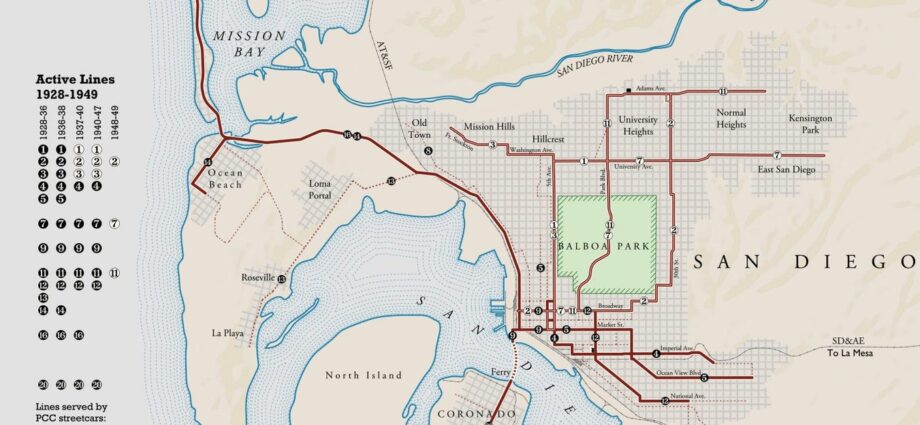An analysis of the Georgia-Meade Bikeway
By Anar Salayev, San Diego Correspondent at Pedestrian Space
Recently, the city of San Diego added 3.5 miles of bike, pedestrian, and traffic calming infrastructure between Kensington and University Heights along Meade Avenue and Georgia Street. I discuss some benefits and opportunities for improvement here.
While the centerpiece of this project is certainly the improved bikeways, the supporting design elements go a long way in providing comfort to the neighborhoods’ many pedestrians as well. The Mid-City community that this corridor runs through is a dense mixed-use neighborhood that is reminiscent of pre-war streetcar suburbs (because, well, it used to be one).
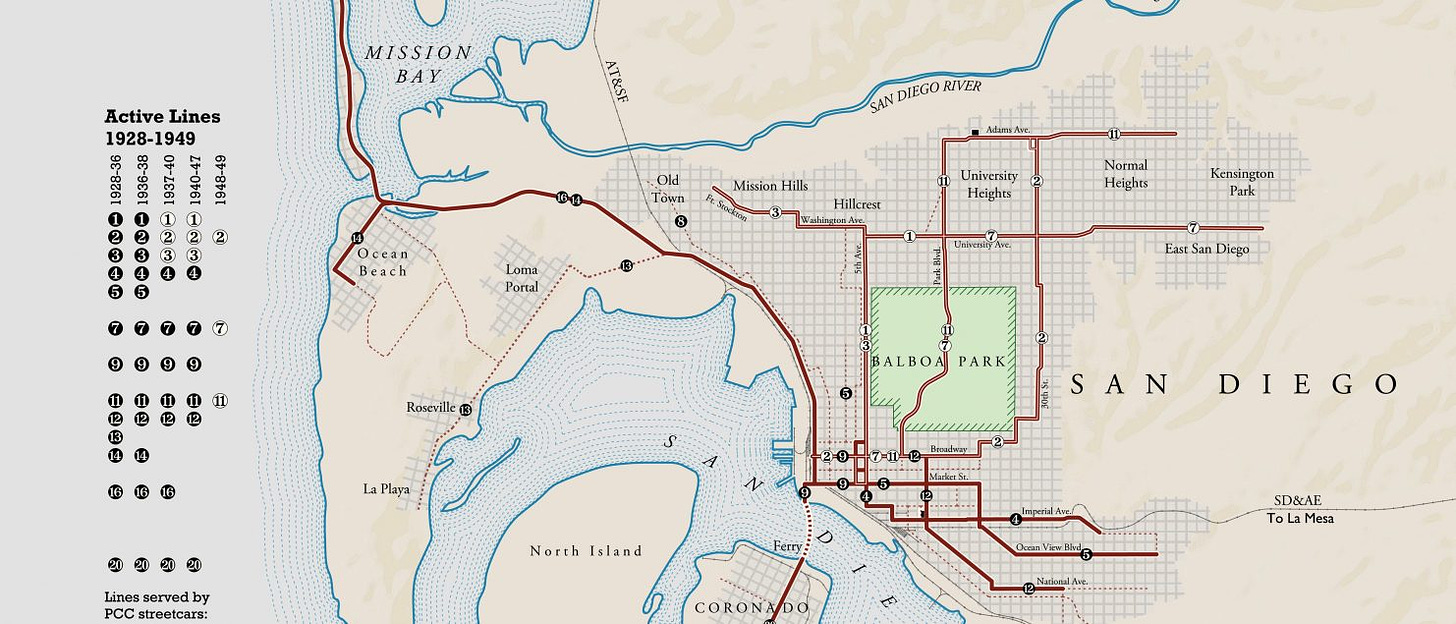
This makes it extremely walkable, allowing residents living along Meade Avenue to get to businesses and services along Adams Avenue and El Cajon Boulevard without having to get in their car. Along with businesses, there are a handful of parks, schools, and other cultural institutions that line the gridded streets intersecting these Mid-City neighborhoods. I frequently see friends strolling along with a cup of coffee, parents walking their children to school, or a couple in pajamas walking their adorable pup.
All pedestrian, mobility, and bicycle advocates are ultimately fighting for one thing: reclaimed space. Reclaimed space from decades of car-centric policies, design, and engineering.
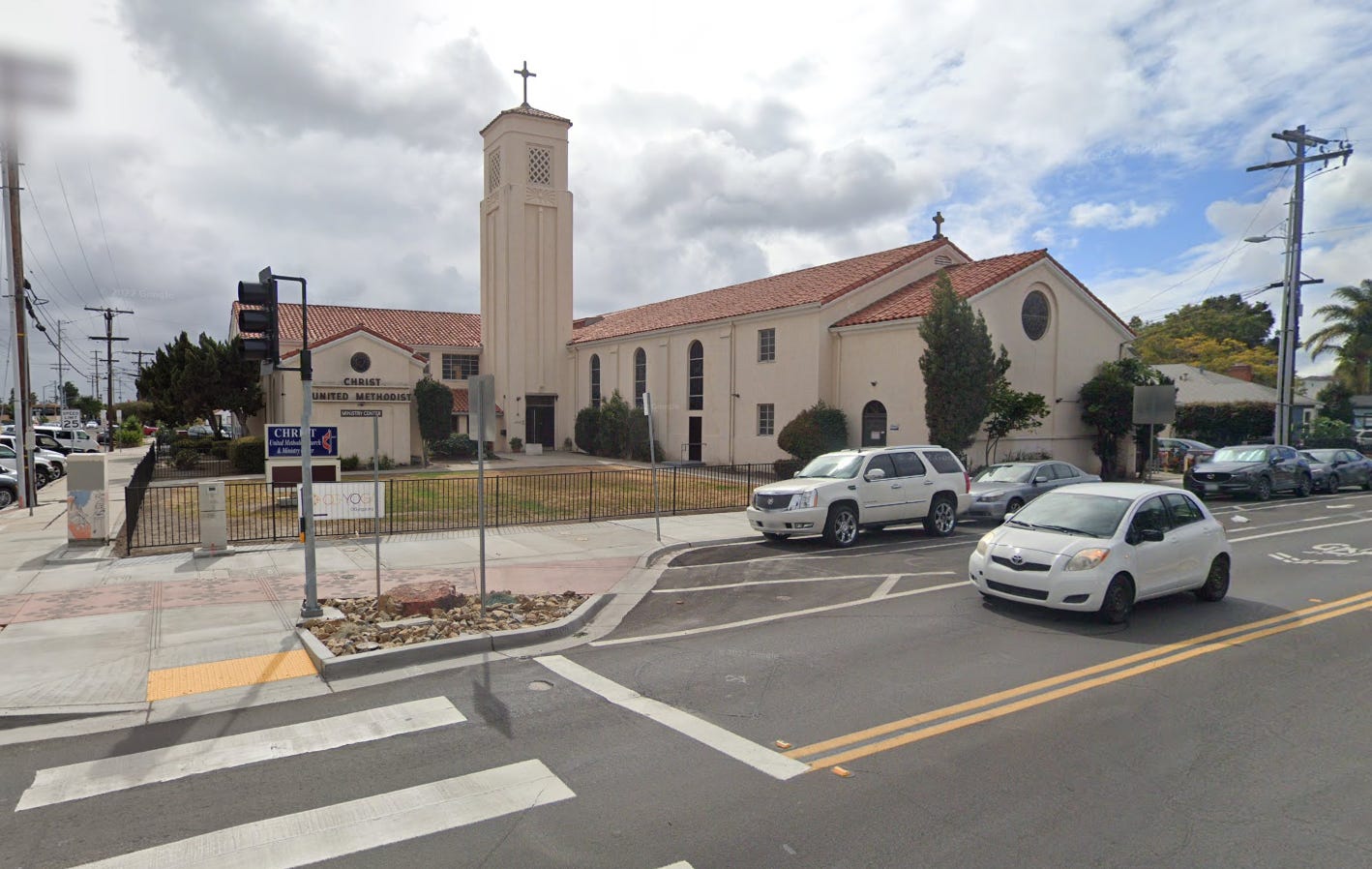
These improvements benefit us all by calming traffic and reclaiming space.
Calming Traffic
Traffic calming is an important measure in improving pedestrian safety and comfort. For the last few decades, North American traffic engineers have decided that placing arbitrary speed limit signs is an effective way of slowing down traffic. We now know that driver behavior isn’t shaped by text on a metal board but rather the built environment. These principles are put into practice along the Georgia-Meade bikeway.
Traffic circles
There are 10 new traffic circles, or roundabouts, throughout Meade Avenue. Roundabouts are great for so many reasons: they improve traffic flow (for both drivers and bicyclists), decrease localized pollution, reduce the likelihood of a crash, reduce the severity of a crash, and force drivers to slow down. An added benefit of many of the roundabouts on Meade Avenue (below) are that they have splitters and sidewalk extensions – these reduce pedestrian crossing distance and allow for refuge, so that pedestrians are required to navigate traffic one direction at a time. And because they’re slightly raised, they further decrease the speed at which vehicles enter the roundabout.
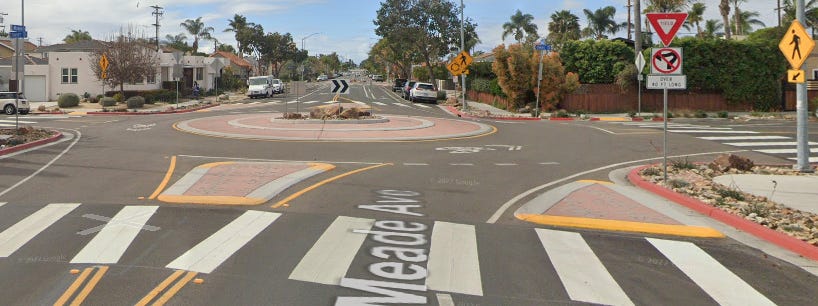
Chokers
Chokers and speed cushions work in tandem to slow down traffic. While the cushions slow down vehicles, they allow for emergency response vehicles to pass through unimpeded. The chokers on either side separate vehicles from bicyclists from pedestrians. Though there are an acceptable number of street cushions (9 across the entire Bikeway), I would actually like to see a few more chokepoints given how residential a majority of this corridor is.
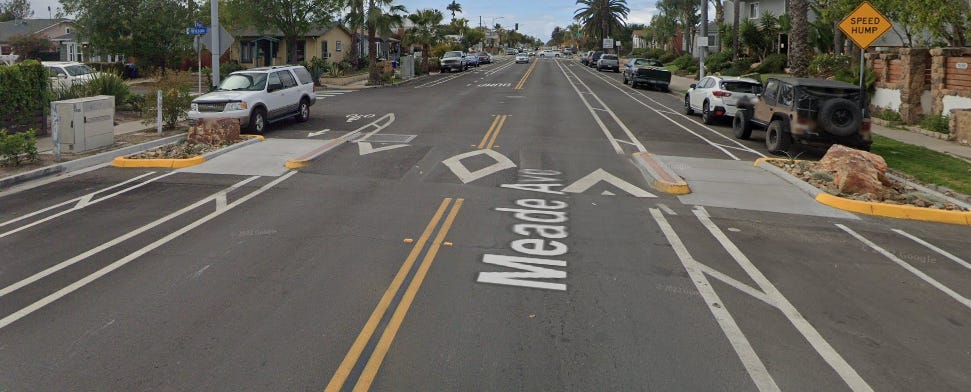
Narrowed roads
All of these upgraded design elements ultimately do a great job in narrowing the roadway throughout the corridor. While slapping a 35 MPH limit sign on a massive road is great at increasing the number of tickets given, it does nothing to slow down traffic. If the latter is our goal, then slimming down roads is the way go.
Reclaiming Space
All pedestrian, mobility, and bicycle advocates are ultimately fighting for one thing: reclaimed space. Reclaimed space from decades of car-centric policies, design, and engineering. Nobody is waging a war on cars – we just want less of our precious Earth dedicated to their use, abuse, and storage. A number of design elements throughout the Georgia-Meade Bikeway improve comfort and safety by explicitly designating spaces wherein drivers are and are not allowed.
Raised crosswalks
Acting as an uninterrupted extension of the sidewalk, raised crosswalks let drivers know that they’re trespassing and must accommodate higher priority traffic, namely, pedestrians. There are three across Meade, with two of them placed right next to an Elementary School.
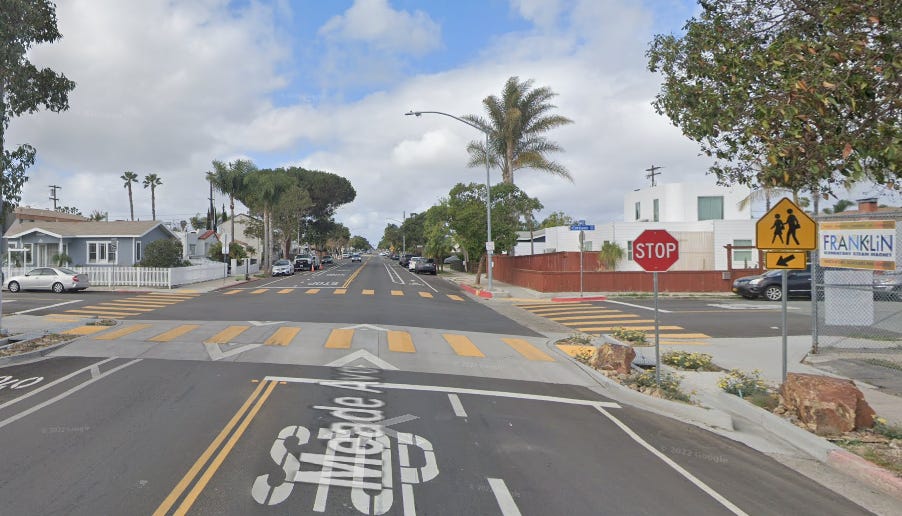
Bend-outs
These do three things really well:
- Extend the sidewalk, thus reducing crossing distance;
- Place crossing pedestrians ahead of the stopped vehicles so that they’re immediately visible drivers, and;
- Force drivers to take right turns more slowly, reducing the probability and severity of vehicle-pedestrian collision
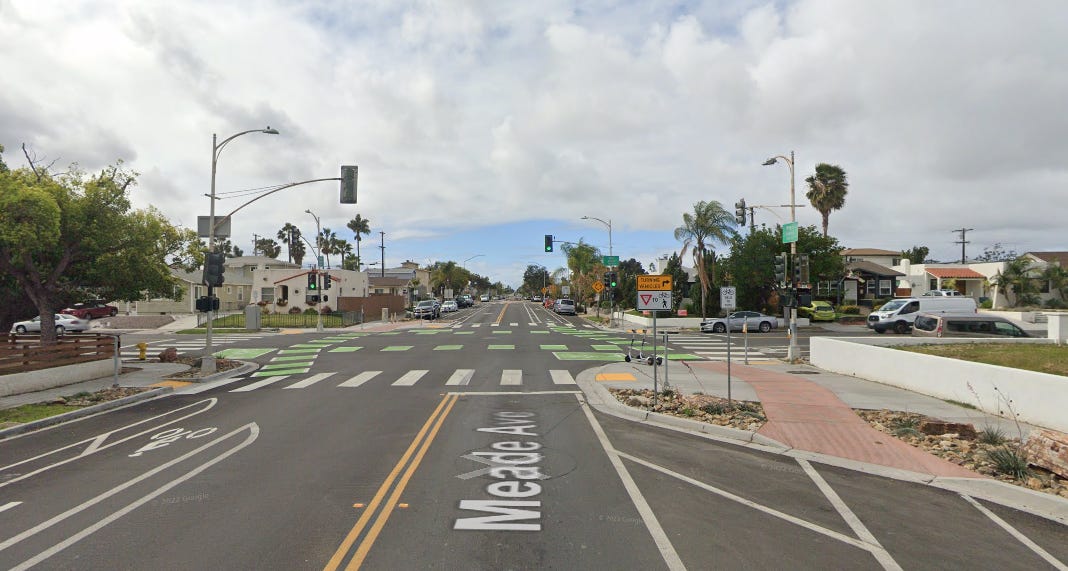

Buffered bike lanes
Even though paint isn’t infrastructure, the guiding lines help to keep vehicles within their lane. This, along with any parked vehicles and street trees, provides layers of separation between moving vehicles and sauntering pedestrians
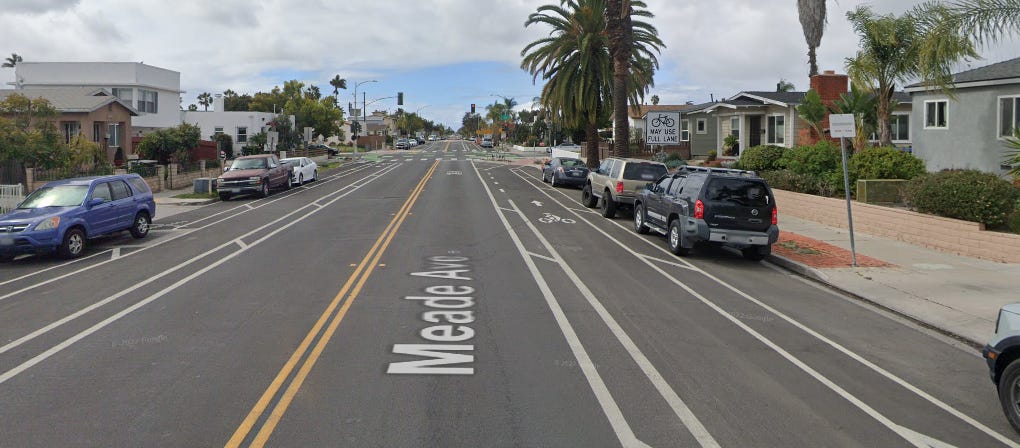
Once some of the new street trees grow and the roundabouts are completely landscaped, Meade Avenue will be a completely new space for pedestrians. I look forward to seeing similar safety treatments reproduced across the city. This along with some zoning reform would go a long way towards meeting San Diego’s Climate Action Plan and Vision Zero goals.
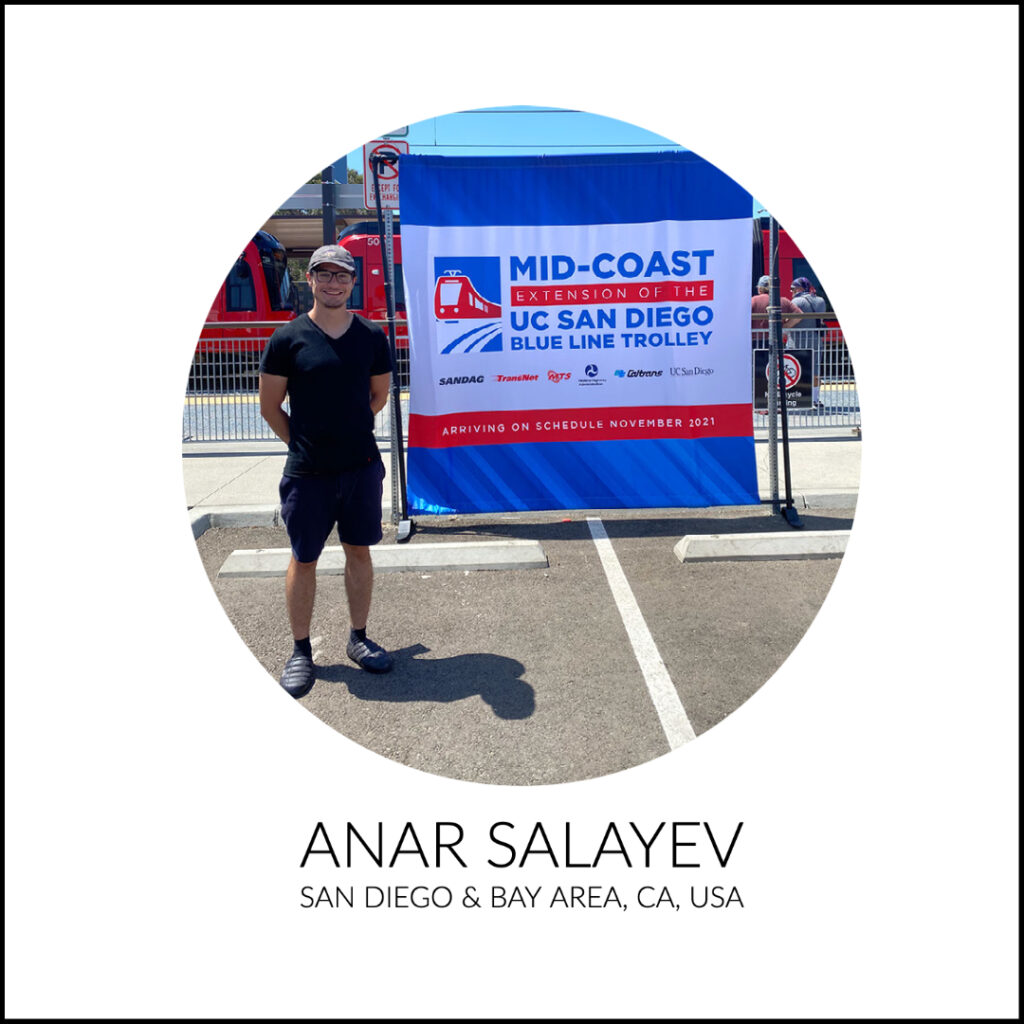
Anar is a car-enthusiast turned walkability advocate. He seeks a holistic understanding of the built environment. He believes that human-centric urban design will go a long way in combatting climate change, encouraging sustainable practices, and improving health outcomes – both mental and physical.
Read San Diego and Bay Area Correspondent Anar’s content here
Read more about the Global Walkability Correspondents Network here

